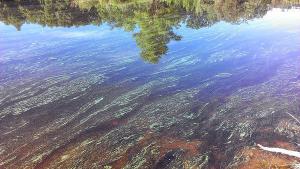Environmentalists hope to spur public support for clean water
Three local environmental groups are looking to put a grassroots spin on Gov. Jack Markell's failed Clean Water for Delaware's Future initiative.
The Delaware Center for the Inland Bays, the Partnership for the Delaware Estuary and the Delaware Nature Society have joined forces to encourage public support for cleaning up Delaware's waterways.
|
Numbers encourage support for clean water
Source: Department of Natural Resources and Environmental Control
|
||||
“We want the public to demand, or at least request, money be spent on cleaning up our waterways, rather than the other way around,” said Roy Miller, policy coordinator at the Delaware Center for the Inland Bays. “ If we can build a grassroots effort, maybe it'll have success.”
“It's an educational campaign with a take-action piece,” said Delaware Nature Society environmental advocacy manager Brenna Goggin. “We're asking people to show their support by contacting their elected official and let them know that secured or dedicated funding is a priority for them.”
Last year, Markell toured the state lobbying for a property tax to generate $30 million annually for five years to clean up Delaware's waterways.
The new initiative, The Clean Water Campaign: Delaware's Clear Choice, is hoping to put the power in the hands of Delawareans, asking them to demand cleaner waters rather than be forced to pay for a government-backed initiative.
Goggin said a recent survey commissioned by the Delaware Nature Society shows that Delawareans are ready and willing to pay a few extra dollars to ensure that their beaches, ponds, streams and creeks are safe for recreation. Whether it's their four-legged or two-legged children playing in the water, people want to know that it's safe from toxins, she said.
“When you ask people point blank, 'How much would you be willing to pay to make sure the water that's coming out of your tap, or that the stream you allow your kids or grandkids to play in, that it's clean?' people are surprisingly generous,” she said.
The survey, which included random calls to about 400 local landlines and cellphones, found that 57 percent of respondents said they would support a clean water fee. When the fee was specified to $3.75 per month – the same rate for residents as proposed by Markell's initiative – that number jumped to 74 percent.
Miller said securing funding is the key to tackling water quality issues from toxins in northern Delaware's waterways to eutrophication issues in the Inland Bays.
“We would spend the money, if we had it, on nonpoint source control. Of course ag is a big potential player in that,” he said. “If significant money became available, we could see partnering with our farmers for more best-management practices.”
If the advocacy portion of the Clean Water Campaign is successful, Miller said, agencies could work with funding to implement some recommendations outlined in the state's 2008 pollution control standards. That plan includes a $25 million per year price tag, but it has not been funded.
Those pollution control measures include planting more cover crops, restoring wetlands and riparian buffers, decreasing nutrient loading from urban sources, converting on-site sewage to central sewage, additional stormwater maintenance and even installing more living shorelines to protect areas from saltwater intrusion.
“We think, and this is the gist of the strategy, that people should get behind additional funding for water pollution control and cleaning up our waterways,” Miller said.
Department of Natural Resource and Environmental Control officials have reported that 94 percent of Delaware's rivers and streams and 74 percent of lakes and ponds throughout the state are polluted and do not support healthy fish and aquatic life, while 86 percent of rivers and 41 percent of lakes and ponds are not safe for swimming.
Miller said those statistics include health advisories for a portion of Delaware's waterways, some of which recommend eating no more than one meal a year of local fish catches.
“When you look at statistics like 94 percent don't support all fish and wildlife uses ... then those statistics become a little alarming and we realize we have a lot of work to do,” he said.
The Clean Water Alliance – the coalition of organizations and stakeholders working on this new initiative – will host a rally Tuesday, June 2, at Legislative Hall in Dover to educate nature enthusiasts about the campaign.
For more information about The Clean Water Initiative, go to http://cleanwaterdelaware.org/ or https://www.facebook.com/cleanwaterdelaware.



























































